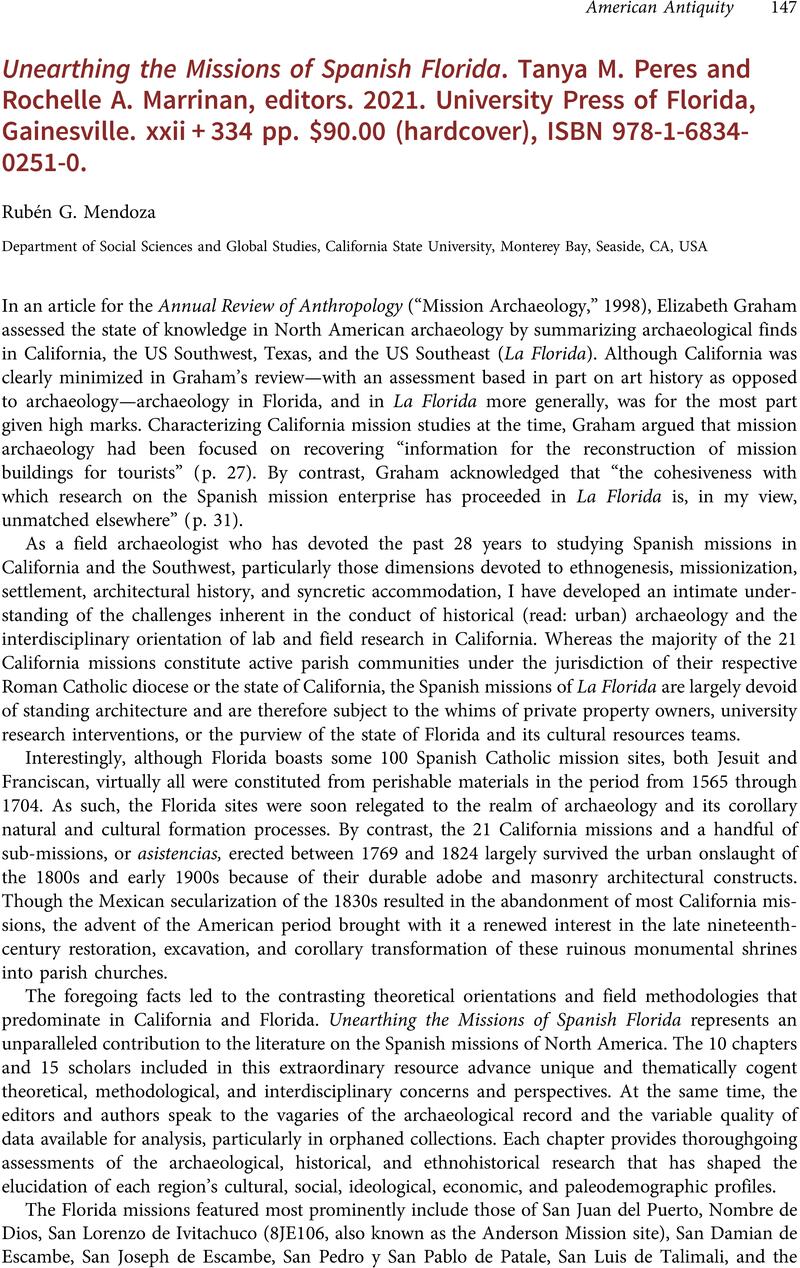No CrossRef data available.
Article contents
Unearthing the Missions of Spanish Florida. Tanya M. Peres and Rochelle A. Marrinan, editors. 2021. University Press of Florida, Gainesville. xxii + 334 pp. $90.00 (hardcover), ISBN 978-1-6834-0251-0.
Review products
Unearthing the Missions of Spanish Florida. Tanya M. Peres and Rochelle A. Marrinan, editors. 2021. University Press of Florida, Gainesville. xxii + 334 pp. $90.00 (hardcover), ISBN 978-1-6834-0251-0.
Published online by Cambridge University Press: 02 October 2023
Abstract
An abstract is not available for this content so a preview has been provided. Please use the Get access link above for information on how to access this content.

- Type
- Review
- Information
- Copyright
- Copyright © The Author(s), 2023. Published by Cambridge University Press on behalf of the Society for American Archaeology


